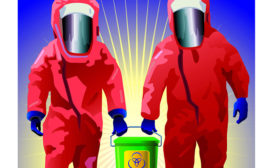News
Roofing contractor again fails federal safety inspection
OSHA penalties: $108,500
June 16, 2016
Utility district cited in arc flash explosion at hydroelectric dam
L&I cited the utility district for five serious violations and for each assessed the maximum penalty of $7,000
June 16, 2016
Never miss the latest news and trends driving the safety industry
eNewsletter | Website | eMagazine
JOIN TODAYCopyright ©2024. All Rights Reserved BNP Media.
Design, CMS, Hosting & Web Development :: ePublishing









